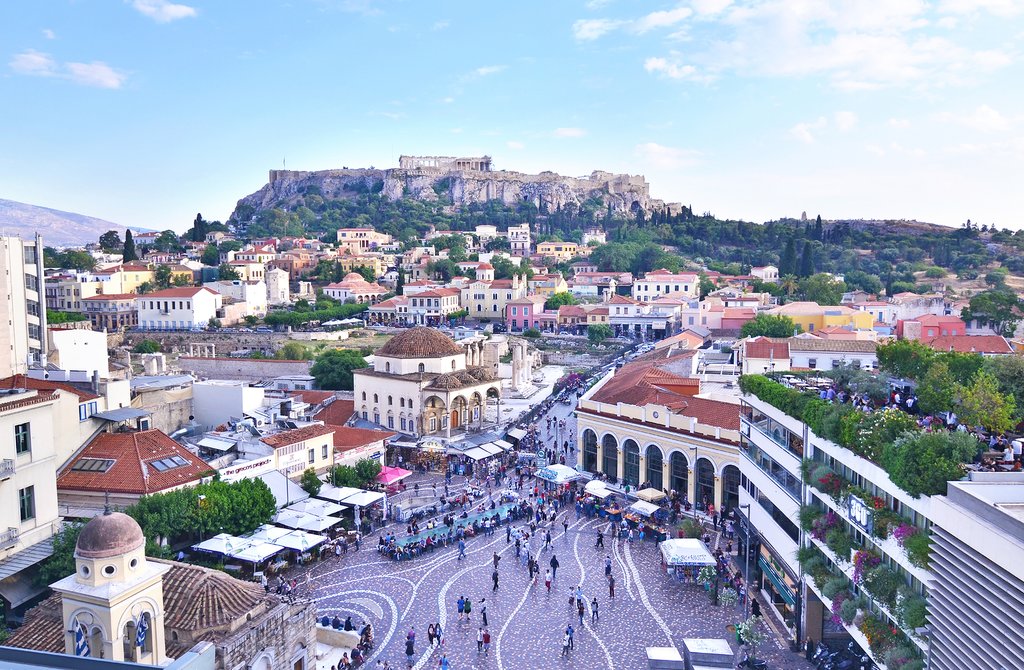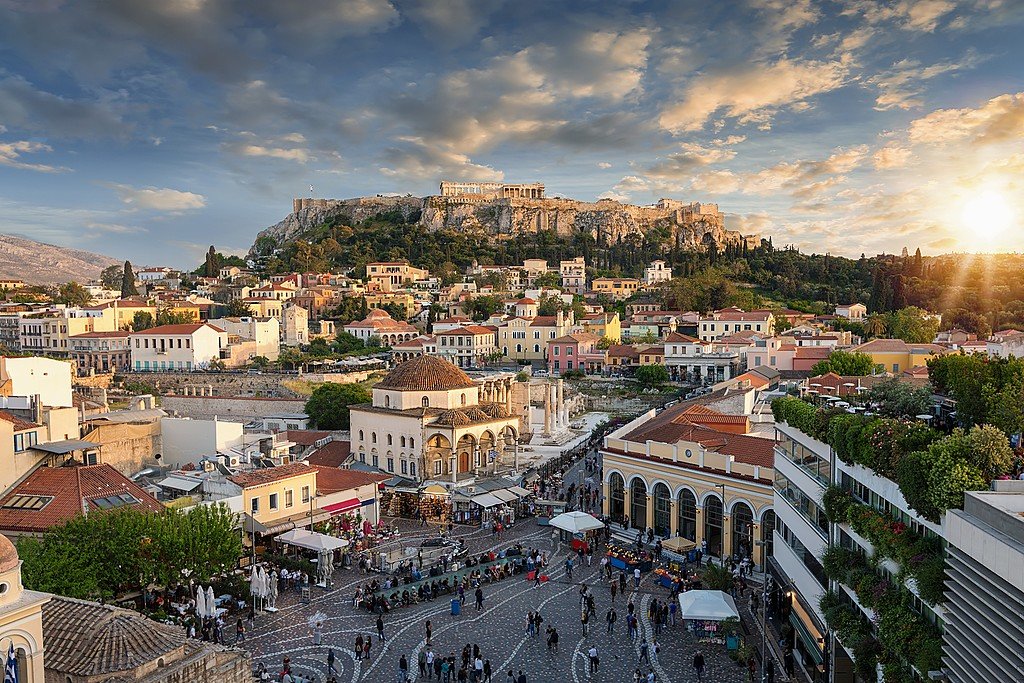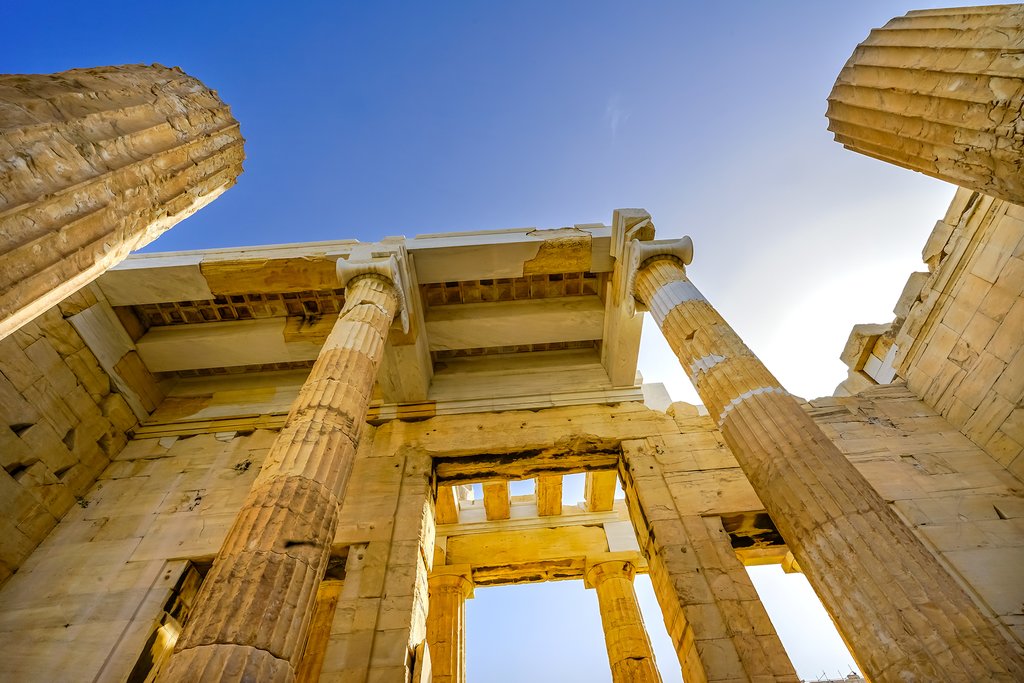Highlights
- Spend three days on board your personal island sailing tour
- Stroll the town promenades of Aegina and Poros
- See the Classical sites at Mycenae and Epidaurus
- Discover the history and Venetian architecture of Nafplio
- Take a morning bike ride around Athens
Brief Itinerary
| Day | Highlights | Overnight |
|---|---|---|
| Day 1 | Arrive in Athens | Athens |
| Day 2 | Guided Acropolis Visit | Athens |
| Day 3 | Good Morning Athens Bike Ride | Athens |
| Day 4 | Sail to Aegina | Aegina |
| Day 5 | Sail to Poros | Poros |
| Day 6 | Sail to Moni, Continue to Epidaurus | Palaia Epidavros |
| Day 7 | Explore Ancient Epidaurus | Palaia Epidavros |
| Day 8 | Travel to Nafplio | Nafplio |
| Day 9 | Day Trip to Leonidio | Nafplio |
| Day 10 | Ancient Mycenae Day Trip | Nafplio |
| Day 11 | Visit Corinth & Acrocorinth, Return to Athens | Athens |
| Day 12 | Free Day in Athens | Athens |
| Day 13 | Cape Sounion and the Temple of Poseidon | Sounion |
| Day 14 | Depart Athens |
Detailed Itinerary
Day 1: Arrive in Athens

Welcome to Greece! You'll begin your trip in Athens, home to both the iconic Acropolis and so much more. The mythology of this spectacular city precedes it, with towering temples to Classical deities and the ruins of ancient marketplaces rubbing shoulders with lively nightlife, crowded flea markets, and contemporary cuisine. Make the most of your time in the city at some of these spots:
- Check out the views of the can't-miss Parthenon. (Pro tip: The Parthenon is the temple, the Acropolis is the hill.) This temple to Athena has enchanted visitors since its construction was completed in 438 BC. It's probably the first thing that comes to your mind when you think of ancient Greece and is visible from many of the city's high points.
- Stop at the sprawling National Museum for a crash course in ancient iconography. Be sure to seek out the room housing the Antikythera mechanism, essentially an ancient astronomical computer.
- Visit a smaller archaeological site at the Tower of the Winds, then stroll down neighboring pedestrian Aiolou Street to stop at shops and cafes.
- Find your perfect souvenir or sun hat in the busy stalls of the Monastiraki flea market.
Spend your evening exploring the up-and-coming Pangrati neighborhood or amid the nightlife and mezze of the Psyrri district.
Day 2: Guided Acropolis Visit

Today you'll get to experience the mighty Acropolis—ruins of the iconic 5th-century BCE complex located on the rocky hilltop overlooking the city. Take a guided tour of the entire settlement with an English-speaking professional guide who will share the stories of the country's most famous monument. In addition to the iconic Parthenon, dedicated to the city's patron goddess Athena, you'll view and learn about the Propylaea, the Temple of Athena Nike, and the most sacred temple of Erechtheion, all located on the sacred rock of the Acropolis.
Complement your tour with a trip to the nearby modern Acropolis Museum. Many of the more delicate statues and other artifacts originally found at the Acropolis have been moved here, but you can imagine them in their previous home as you explore the exhibits. Complete your visit with a stop in its cafe for either lunch or a relaxed snack and coffee.
Stop to explore the Anafiotika neighborhood on the northeast side of the hill before you leave. The oldest neighborhood in the city, Anafiotika's classic white geometric architecture echoes the motifs of the Cyclades in this tranquil urban oasis.
Day 3: Good Morning Athens Bike Ride

Say kalimera with a good morning bike ride around the city. You'll wheel past many of the highlights of the city over the course of 3.5 hours, complete with a coffee break at a cafe. Your guide will tell you about all the spots you pass, such as the Panathenaic Stadium, National Gardens, the Agora, Keramikos, and of course the Acropolis, along with insider tips on the best spots to eat and drink in Athens and plenty of breaks to take in the views.
Put those tips into practice by spending the rest of your day in the posh Plaka district, also known as the neighborhood of the gods. One of the city's oldest neighborhoods, the area features neoclassical architecture in both its homes and shops. When hunger strikes, find a spot at one of the outdoor tables lining the streets. Diners feast on Greek favorites such as the classic horiatiki salad, souvlaki, lamb dishes, and more. Go mezze-style to try them all.
For photography enthusiasts (or those who prefer to sleep late), it is also possible to take the bike ride in the late afternoon rather than the morning, when the soft light is great for pictures.
Day 4: Sail to Aegina

Board your catamaran today to begin the sea portion of your journey. You'll start sailing off to Aegina, a small island with an impressive past. The city used to rival Athens as the greatest sea power of the region, and operated as the first capital of the newly formed Greek state after the country won independence from Ottoman rule in 1821. Today, Aegina is more famous for its pistachios and the horse-drawn carts that amble along the port next to the traditional fishing boats.
If you're in the mood for the Classical era, the ancient temple of Aphaea is one of the island's chief attractions. It's one of the only temples to the goddess Aphaea, who was worshipped almost exclusively on Aegina.
See a different angle of Greek history under the many domes of the Greek Orthodox church of Agios Nektarios. The saint was known for his healing abilities and hard-working, humble nature, and even established a nearby monastery for women that's still inhabited and visitable today. Some say that if you visit his tomb within the monastery, you can hear his blessing.
Don't end your day without a stop at Mourtzis Traditional Sweets to try some of the island's signature pistachio confections.
Return to your berth to spend the night onboard.
Day 5: Sail to Poros

Head south across the the sea to Poros, where you can visit the neoclassical architecture and clock tower of Poros town or explore its interior. You can circumnavigate the dual islands, connected by a narrow bridge, in approximately an hour by car.
Much like its neighbor Aegina, Poros also boasts sites from across Greece's historic and religious spectrum. Swap your focus from the previous day to see the full picture of the islands.
Classicists can pay tribute to the sea god at the site of the Temple of Poseidon, both a fascinating ruin in its own right and the site of ancient orator Demosthenes' death. Many of its artifacts have been removed, but remain on the island in the Archaeological Museum.
Jump forward in time and visit the monastery of Zoodochos Pigi, founded in the 1700s at what was believed to be the site of a holy spring. Its quiet whitewashed domes sit on a hillside overlooking the sea—the perfect spot to experience a working monastery.
There's also always the classic Mediterranean activity of resting in the shadow of the pine trees and taking in the waves. Askeli is one of the more popular island beaches to set yourself up for a day of swimming and sunning, followed by an evening enjoying the day's catch at a seaside taverna.
Return to your berth to spend the night onboard.
Chat with a local specialist who can help organize your trip.
Day 6: Sail to Moni, Continue to Epidaurus

Located off of Aegina, Moni island is so small that it's uninhabited by humans other than the occasional boat-bound visitor seeking tranquility on its shores. Instead, its pine forests are home to Cretan kri-kri goats, peacocks, and inquisitive deer.
Hike up the island's interior mountain to find a former World War II lookout post or simply spend your day in its turquoise waters, challenging yourself with nothing more strenuous than a detour to the seasonal beach bar.
Your time at sea will end here with a drop-off in Athens to switch to land-based transportation as you get on the road to Epidaurus.
Day 7: Explore Ancient Epidaurus

Get introduced to the highlights of the Epidaurus region. You'll learn about the local history and traditions as you explore the remains of this ancient city, which was one of the most visited healing centers in the world during its peak. The sick would travel to the Sanctuary of Asklepios, the god of medicine and healing. They would spend the night in the temple's sleeping hall in hopes that the deity would appear in the dreams with a diagnosis and cure for their condition, whatever it may have been.
You'll also see the city's third-century theater, one of the best remaining examples of its type due to the excellent acoustics and aesthetic arrangement and a UNESCO World Heritage site. It was originally designed for musical and singing competitions, and is the largest stone resonator in the world. Aeschylus, Sophocles, and Euripides all had plays performed here.
Depending on the timing of your trip, you may even be able to catch a performance on the ancient stage.
Day 8: Travel to Nafplio

Today brings you to Nafplio, one of the prettiest seaport towns in the Peloponnese peninsula. Once believed to have been founded by the son of Poseidon, the town was the first capital of the new Greek state after the war of independence in the 1800s.
Take a stroll through the old town, where you'll pass statues honoring significant figures from Nafplio's history alongside Ottoman fountains, and Venetian architecture along the winding streets, topped off by the Bourtzi Castle in the middle of the harbor. Accessible only by boat, the castle was built in the 1470s to defend the city from pirates, and it still keeps watch at the entrance to Nafplio Bay.
Visit the Vasileos Konstandinou pedestrian street to take you across the old town, ending in Syntagma Square, also known as Constitution Square, where you can choose between a variety of tavernas for dinner. Don't miss the climb up 1,000 steps to see the view from the Palamidi Castle, or visit the scenic Arvanitia path along Acronafplia, which lives up to its translation of "the edge of Nafplio."
Day 9: Day Trip to Leonidio

The Arcadian seaside town of Leonidio sits at the end of the Dafnon river gorge, just between the ocean and the foot of Mount Parnon. It was once the capital of the Tsakonia region, and signs around town still boast writing in the local Tsakonian dialect—one of the only living languages descended from ancient Doric Greek.
It's also known for its unique eggplants, citrus, and tomatoes, so keep your eye out when browsing the restaurant menus or time your visit to coincide with the annual eggplant festival. Hikers and climbers can make their way up Mount Parnon or the surrounding crags.
Day 10: Ancient Mycenae Day Trip

Travel back in time to the well-preserved archaeological site of Mycenae, very much deserving of its UNESCO World Heritage Site status.
You may recognize Mycenae from its role in Homer's Iliad: It was home to the famous Helen, whose Mycenean husband Agamemnon led his people to war when she left him for Paris of Troy. See its Cyclopean walls, whose construction method is still a mystery. They got their name due in part to the belief that only the mythical Cyclops would have been strong enough to lift their boulders. You'll pass through the Lion Gate to enter the ruins of the city, wandering past the tombs of Aegisthus and Clytaemnestra and the Treasury of Atreus. Don't skip the onsite museum, full of artifacts of everyday life in the city.
You'll then head back to Nafplio for a relaxing evening in town.
Day 11: Visit Corinth & Acrocorinth, Return to Athens

Pay a visit to the Corinth Canal, a nearly four-mile-long waterway (6 km) connecting the Ionian and Aegean seas, built in 1890. You can see the ancient Diolkos on its western edge, where boats used to be transported by land.
Continue to the site of ancient Corinth, where you can visit monuments such as the Peirene Fountain, the watering hole of the winged Pegasus; Temple of Apollo; and Bema of Saint Paul, the site of the apostle's trial. Or visit the Acrocorinth castle, whose history dates back to the seventh century BCE. Acrocorinth is one of the biggest castles in Greece and was a key defensive spot throughout its history, particularly due to the fresh spring running within its walls.
Once you're done, you'll head back to Athens for the evening to get reacquainted with the city.
Day 12: Free Day in Athens

Start your day by picking up a koulouri, the popular Athenian street sesame bread rings, or sweet loukoumades donuts with Greek coffee. You have plenty of time during the day to seek out the city's culinary highlights, including souvlaki in the Monastiraki neighborhood or neo-tavernas on Aiolou Street.
Visit a new neighborhood in the afternoon with a trip to Kerameikos, home to the ancient city cemetery. Wander through the graves and look for the carvings depicting portraits and everyday scenes to envision what life and death were like in the ancient world. Pass through the Sacred Gate, where pilgrims from Eleusis used to pass on their way to the Eleusinian ritual, or the Dipylon Gate, which used to be the starting point of the Panathenaic Procession. The neighborhood isn't all history, though—it's now home to some of the city's most interesting restaurants, ranging from two-Michelin-star Funky Gourmet to Ta Kanaria cafe, which is also home to a street theater company, to one of the city's only Thai restaurants.
If you're more in the mood for museums, scope out some of the many around Athens. The city has a whole slew to be explored, depending on what specialty speaks to you.
For more history and mythology:
- Acropolis Museum
- National Archaeological Museum
- Museum of the Ancient Agora
- Archaeological Museum of Kerameikos
Find some fine arts at:
- Benaki Museum
- Museum of Modern Art
- National Gallery
Go off the beaten path at:
- Museum of Cycladic Art, where you can also buy some truly unique souvenirs
- The digital interactive museum at the Platonic Academy, next to the site where the actual Academy stood
- Museum of Ancient Greek Technology in the center of Athens, featuring a working model of the Antikythera mechanism (which can roughly be described as the first analog computer). It was used to predict astronomical positions and eclipses years in advance.
Day 13: Cape Sounion and the Temple of Poseidon

Head down to the Athenian Riviera today, an area full of both modern luxury, history, and stunning island views.
Your adventure will take you along the coast to visit the Temple of Poseidon, providing you with historical background on the way. The cliffs overlook the Saronic Gulf, with one of the best sunset views Greece has to offer and seven islands to spot in the distance. Keep an eye on the Doric columns, where Lord Byron once carved his name.
Day 14: Depart Athens

Time to say farewell to Greece. Enjoy your final Athenian breakfast and sneak in some last-minute exploring before your transfer to the airport.


